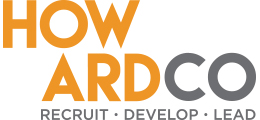How to succeed in a challenging Recruitment Market: 5 Essential Insights and Strategies
There is no doubt that the last 18 months have been challenging when it comes to recruitment. If you have found it easy you are lucky.
A lack of quality applicants, no shows at interviews and longer hiring times can be extremely difficult for business owners and managers wanting to fill important roles.
As an experienced HR and recruitment consultancy we have worked closely with our clients to help them navigate this challenging market with considerable success.
The lessons we’ve learned have translated into improved processes and a new way of thinking when it comes to recruiting and retaining talent. Expediency is definitely the new name of the game but this must not be at the expense of a structured and effective process.
I want to share with you the insights we have gained not just from our own experience but also from our own industry research and client feedback.
And I will share with you the strategies that we are using to help our clients achieve successful results in this current challenging recruitment market.
1. The job market is shifting. Some potentially good news!
Over the last 18 months we know there has been an increase in demand for employees and a shortage of supply due in part to Covid and the curb on immigration.
In trend terms, in December 2022 the unemployment rate remained at 3.5%. participation rate remained at 66.7%. employment increased to 13,765,200. (Source: ABS)
The result being high competition for talent which in turn has been driving upward pressure on salaries as well as increasing demands from employees and candidates for better working conditions.
The effect of this is that some employers may have chosen to sit on the sidelines in 2023 to see whether this current employment market might improve.
And there is some potentially good news.
The job market is undergoing a shift. According to the SEEK Employment Dashboard for January 2023 there has been a decrease in job postings of 8.1% year on year and an increase in job applications by month of 9.2%.
While this shift appears favourable for businesses, recruitment expert Greg Savage warns that the recruitment process won’t necessarily become easier. He states that “a high volume of candidates does not always equate to a high number of qualified candidates.”
So, what are some of the strategies you can adopt to attract talent in the current market?
a) You may choose to sit it out and see whether the current trends continue and there is a further influx of available talent later to meet your needs.
b) Or, you might see this as an opportunity to enter the market with the increase in applicants and fewer competing jobs
c) If you decide to hire you need a complete recruitment strategy to target your ideal client. It’s no longer satisfactory to simply copy and paste an ad on Seek or any other platform and expect the inquiries to come flooding in. You need your candidate to read your ad and say “That’s me!”
d) And you need to respond fast. If you wait 3 weeks till the close off of your ad before you start interviewing you are likely to miss the boat. Qualified applicants move in and out of the market fast and are likely to be considering more than one opportunity at a time. If a good candidate comes along you need to interview them fast.
2. Money still matters
In the current candidate-led market you need to understand what your prospective employees are looking for and there have been some noticeable shifts in what will attract your ideal candidate.
However, money or remuneration is still a key driver of attraction to a new role. And this has been influenced by the shifting economy.
Amid the economic challenges of rising inflation rates and skill shortages, compensation still remains a significant factor in employee decision-making.
The FY22/23 salary guide by HAYS revealed that employers expect salaries to increase this year, with 88% of employers planning to raise salaries and 37% intending to go beyond the expected 3% increase.
Securing a competitive salary will play a crucial role in building or depleting your pool of talent.
In essence, the compensation package you offer will determine your success in attracting and retaining top talent, or result in a loss of valuable employees.
So what are some potential strategies regarding remuneration.
a) Number one is to keep your eye on the market. Use job boards like SEEK, LinkedIn and Indeed to monitor the pay trends for jobs that are similar to your business. Also, use Salary guides that the large recruitment firms publish as useful benchmarking.
b) When advertising, be sure to display your salary range in the ad. According to SEEK, on average, recruitment ads that display salary attract a higher number of applicants (this has certainly been our experience)
c) Implement a regular salary review process (at least annually) to ensure internal rates are aligned with market. Don’t be that organisation that relies on its workers to come to you for a raise. You need to be on the front foot.
d) Each person’s case will be different so make sure you understand the needs of your new and existing employees around remuneration and reward. It may be that salary alone is not the main motivator but that other benefits could be appropriate such as salary packaging, extended leave, additional training etc. You can be creative but you do need to have the conversations with your people to find out what works for them.
3. Health and wellbeing are becoming increasingly important
Employees are actively seeking an employer who recognises the significance of work-life balance. A balanced lifestyle is a crucial factor for them.
As a result of Covid and the shift to more flexible working models, including working from home, employees have new expectations in the way they want to work. This is not a short term, knee-jerk reaction to lock-downs. It is a long term trend in the way we work. People will be attracted to organisations that provide a better work environment and lifestyle balance when making decisions about their next job.
According to the article, “8 Key Hiring Trends to Shape the Talent Market in 2023” by HRM online, flexibility and work-life balance are highly valued by employees. In fact, research shows that many job seekers are not willing to consider positions that require full-time office work.
This is supported by the findings of a survey conducted by HAYS, which revealed that 64% of employees surveyed prefer an adaptable, hybrid work environment.
Furthermore, employees are searching for businesses whose values align with their own. Fifty-one percent of respondents in the HAY survey stated that they would consider positions with an organisation whose purpose aligns with their personal values.
So what are the strategies for achieving a more lifestyle friendly workplace.
a) Again this will be different for different environments and people. The key is to find out what employees want and what is practical for you to achieve in your business. For example, working from home.
b) Can you provide opportunities for people to work from home and how many days a week? The popular approach in 2023 seems to be along the lines of three days in the office and two days from home.
c) There are advantages for both working in the office, which enables greater socialising and collaboration, and working from home, which allows greater concentration and flexibility. Employees can use the hours otherwise spent travelling for personal gain such as fitness, health and family. The key is to identify and promote the benefits of each.
d) The other thing you can do is develop a wellbeing and mental health strategy or policy. This starts with engaging with your people to determine what is going to be most beneficial for them and for you as a business. Through collaborating and working together on the policy you will arrive at a strategy that people will own and value.
e) When you create a work and lifestyle friendly environment you have something to talk about that can make you stand out from the crowd and word of mouth will spread so when you are recruiting, people will be attracted to your organisation.
f) When you are advertising for a new role make sure you promote the benefits of your workplace. Flexibility, wellbeing, training and growth opportunities are all positive reasons why people will be attracted to your business. Did you know that SEEK reported the most popular term searched by candidates across all industries is ‘work from home’. And if you have a picture or video that shows what is like to work for you, add that too. Your prospective candidates are looking for a human connection they can relate to.
4. Fears of recession are driving uncertainty on two levels
The fear of an impending recession has caused unease among both employers and employees. Employers are becoming increasingly concerned about the cost of hiring and employee turnover.
This has led to a shift towards temporary or contract workers, rather than adding to the permanent workforce. The findings of the HAYS salary guide support this trend, with 61% of employers planning to increase staff levels in FY 22/23, and 36% of them intending to use temp or contract staff.
And from an employee’s perspective the Elmo software Sentiment Index revealed that, 34% cited fear of a recession as the reason for staying in their current job.
However it’s important not to become complacent just because employees are hesitant to leave. Research by Job Adder suggests that a proactive recruitment approach can still attract candidates who are not actively looking for a job change. And, the use of proactive recruitment (ie search) compared with pre-covid has increased from 19% to 37% in Q4 of 2022.
During economic uncertainty, job security becomes a top priority for employees. However, with inflation leading to a 3% decrease in real wages in 2022, it’s likely that employees will continue to be open to better-paying jobs.
So what strategies can you adopt in times of uncertainty?
a) The answer is to create a realistic but positive view of the future for your employees. Be open and honest about the current situation for your business and do not let rumour and assumption drive your employees behaviour.
b) If circumstances for your business are less certain let them know but also explain what you are doing to manage the things that you can control. By being open with your employees you will gain their trust and buy in especially where they may be able to assist in business improvement initiatives.
c) Another strategy is to tap into what your employees are thinking and you can do this through conducting an employee engagement survey. Many business owners don’t know what is worrying their employees and make decisions based only on their own assessment. And this puts them at risk of making decisions that either alienate or create further uncertainty for their employees.
d) Conducting an engagement survey, such as Fusion Culture or STAR Workplace, will give you accurate information about the current state of mind of your employees and that will enable you to implement more effective strategies to keep them engaged.
e) Finally when recruiting in an uncertain market you need to take a multi-pronged approach. Advertised recruitment will still give you the best exposure, but you will need to complement this with proactive search. Use your networks and platforms such as LinkedIn and SEEK to reach out to potential candidates. In an uncertain market some people may not be actively job hunting but nevertheless may be open to your approach.
f) And think about the wording of your job ad. How you can remove some of the doubts people may have . For example, if your business has been around for a long time promote ‘stability’ as one of the benefits. Similarly, if your business deals in industries that are seen as ‘recession proof’ let people know. Having a blue chip and loyal client base is also a positive. As is having a culture where people stay and turnover is low.
5. In 2023 retention will be more important than attraction.
If you have recruited new staff in 2022/23 your recruits will be looking for you to deliver on the employee experience you promised. The first three months are key to deciding whether they have made the right decision. Your existing employees may be observing the attractive terms being offered to new hires and will be questioning how does this work for me.
Experience and research show that keeping your top talent is just as important as bringing in new hires. In 2023 retention will be even more important with the ongoing shortage of skills and pressure to control expenses. Turnover can be a costly business.
So if you had to work hard to attract talent in 2022 you will need to work equally hard, if not more so, to ensure they stay in 2023 and this includes looking after your existing employees.
With this in mind, more business leaders will be looking to promote from within and invest in the development of their current employees.
And, according to Elmo software’s Sentiment Index, regular performance and development discussions, as well as effective succession planning, will be crucial in identifying and fostering key talent within your organisation.
What strategies should you adopt to improve retention in your organisation?
a) The first step is to have a structured interview and assessment process that ensures your candidate is going to be a good fit for the job and your culture so they stay for the long term.
b) Second, map out a three month onboarding and induction plan so you and the new employee have a roadmap to follow and assess performance against. You need to set your new starter up for success and a clear plan will help them to hit the ground running, becoming a productive and contributing member of your team in the best possible time.
c) The next step is to meet with all your employees to discuss their development needs and future plans. This will give you insight into how to keep each employee motivated and engaged.
d) Make sure that you are providing regular performance feedback at least quarterly. Communicate your expectations clearly and invite feedback on how to get the best from each person
e) Lastly, you need to focus on succession planning. If your employees don’t know where their job is heading or what plans you have for them, they’re more likely to start looking outside to meet their career objectives. Assessing the potential within your business is not only cost-effective in the long run, but it will also keep your top talent motivated and secure, knowing that the company is invested in their future.
In summary, 2023 will continue to be a challenging recruitment market but there are opportunities for you to gain advantage by following our advice above. Retention will be a big theme this year as employers seek to maximise value from their investment in people while proactively addressing the needs for more flexible and lifestyle friendly workplaces.
You will certainly need to be on the front foot.
Recruiting well, engaging in performance and development discussions and creating a succession plan will give you the road map you need to build a talent pipeline to ensure the sustainability of your business.
This will be critical to retaining existing employees, as well as attracting new talent to an organisation that creates opportunities for growth for 2023 and beyond.


















